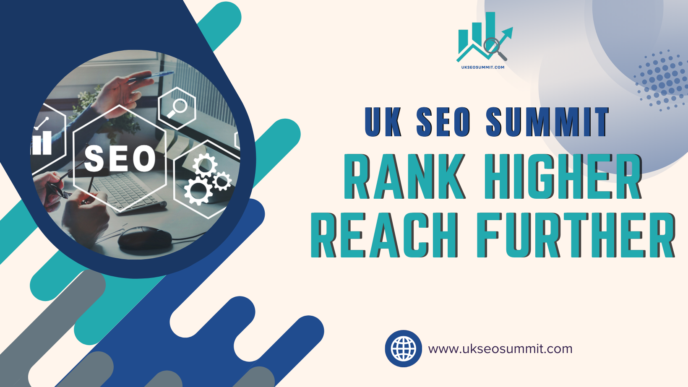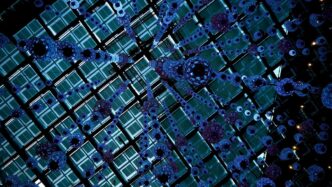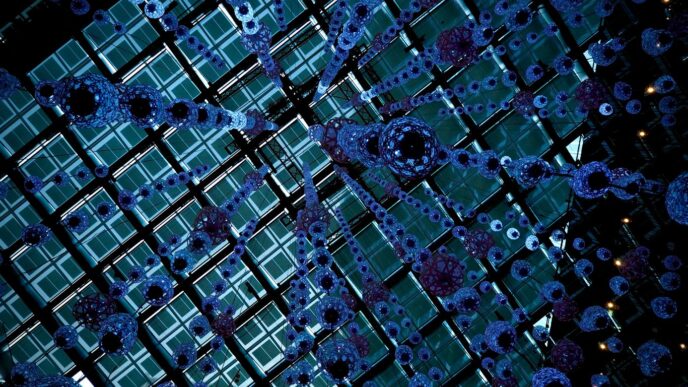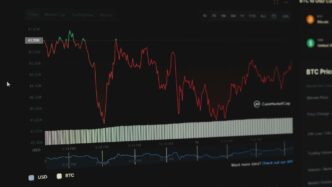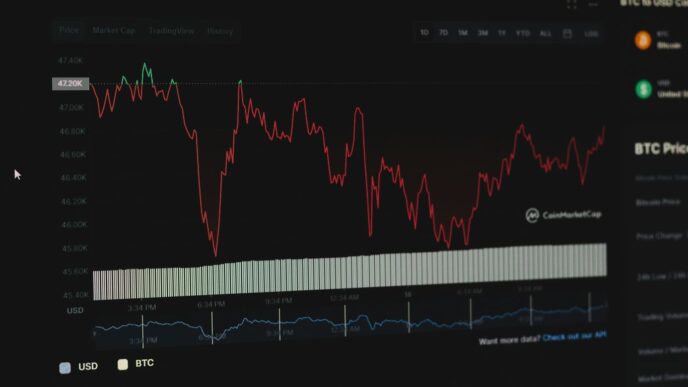Tech and info are changing so quickly, it’s almost impossible to keep up. Every year, there are new gadgets, smarter software, and fresh ways to work or relax. But 2025 is shaping up to be a year where these changes really start to touch every part of our lives. From AI that can write or draw, to new ways to connect online, to robots in places you never expected, the world is getting a serious tech upgrade. Here’s a look at the biggest trends that are set to shape our future, and what they might mean for you.
Key Takeaways
- Generative AI is making it easier for businesses and individuals to create content and automate tasks.
- Quantum computing and 5G are speeding up data and making connections stronger, but they also come with new security issues.
- Virtual and augmented reality are moving beyond games, showing up in classrooms, stores, and even offices.
- Green tech is helping companies find smarter, more eco-friendly ways to work, from data centers to supply chains.
- Healthcare, security, and everyday jobs are all getting a boost from new tech and info, so learning new skills is more important than ever.
Generative AI: Transforming Content and Creativity

Generative AI isn’t just the latest trend—it’s completely shaking up how we think about creating, sharing, and using information. If you’ve read anything online, watched a snappy video, or even chatted with a bot this year, chances are you’ve bumped into Gen AI, even if you didn’t realize it. Let’s break down how this tech is changing real work, what it means for people and businesses, and where it might take us next.
Business Innovation Driven by Gen AI
Generative AI has moved fast into the world of work. Startups and giants alike are experimenting with AI tools not just to save time, but to spark totally new ideas. Here’s what’s happening:
- Content Creation: Marketing teams now rely on Gen AI to whip up campaign drafts, write social posts, brainstorm product names, or even design ad images—often in minutes rather than days.
- Design Prototyping: Need a quick mockup for an app or a logo idea for a pitch? Designers talk to AI systems that spit out workable drafts on demand.
- Customer Interactions: Chatbots are way smarter now—they can mimic human style and help solve customer issues any time, day or night.
There’s a real shift: AI is moving from a supplement to being right in the middle of how companies plan, create, and talk to customers.
Personalization and Automation at Scale
Personalization used to mean plugging your name into an email. Now, Gen AI can create custom experiences in seconds—at a scale that wasn’t possible even last year. Some practical examples:
- Streaming services suggest shows not just based on what you watched, but using AI to predict new interests before you even know you like them.
- Online shops present custom deals, banners, and product lines, sometimes changing the site’s look for each visitor thanks to AI-driven user insights.
- Educational tools can build quizzes or lessons to suit each student’s learning style and speed, making remote learning actually useful for more people.
Let’s look at a quick comparison:
| Old Way | Gen AI Approach |
|---|---|
| Mass emails | Hyper-personalized messages |
| Static ads | Real-time tailored promotions |
| One-size learning | Adaptive, AI-curated content |
Future Skills and Job Market Impact
Some folks worry that Gen AI is out to take everyone’s job. Others say it’ll make work more creative. Like most big changes, it’s a bit of both. What’s clear is that having Gen AI skills is suddenly a must in lots of fields, and the job market is showing it:
- Companies now rank AI experience above traditional years of work in hiring for many roles.
- Even smaller businesses want staff who can use AI tools, not just programmers but marketers, salespeople, and creatives too.
- New job titles like AI Content Specialist or AI Designer are popping up everywhere.
Here’s a quick stat: 71% of managers say they’d rather hire someone with AI skills and less total experience than an old pro who doesn’t get Gen AI at all (source: Microsoft-LinkedIn, 2024).
If you want to stay ahead in 2025 and beyond, learning to work alongside Gen AI is no longer just a smart move—it’s how you keep your career alive and growing.
Quantum Computing and 5G: Building a Faster Digital World

Quantum computing and 5G aren’t just tech buzzwords—they’re becoming very real, pretty fast. Both are pushing our everyday gadgets and big industries to go beyond what anyone thought possible.
Quantum Problem Solving Across Industries
Quantum computers use properties of quantum mechanics, which is a big shift from those regular computers everyone has at home or work. They’re set to start solving problems in ways that older computers just can’t match.
Some practical stuff quantum computers could do:
- Crack tough codes that classical computers would need hundreds of years to solve
- Speed up drug discovery by modeling molecules at an atomic level
- Optimize supply chains so products get where they’re needed, much more efficiently
Pretty wild, right? Industries keeping an eye on this include healthcare, finance, and logistics. Even though quantum computers aren’t on every desk yet, companies are already testing out their quantum-powered software for a head start.
5G Networks Powering IoT and Real-Time Data
5G isn’t just a faster way to watch streaming TV. It’s about letting thousands of devices talk to each other at almost no delay. That’s huge for smart cars, doctors doing remote surgery, or farmers using sensors out in the field.
Here is a quick view comparing 4G and 5G:
| Feature | 4G LTE | 5G |
|---|---|---|
| Max Speed | 100 Mbps | 20 Gbps |
| Latency | 30-50 ms | 1-10 ms |
| Device Density | 100,000/km² | 1,000,000/km² |
The jump in speed and bandwidth means way more devices connected at once, and way more room for innovation. 5G helps power things that were science fiction only a decade ago—think human-like robots and driverless cars, as emerging technologies make daily life more convenient.
Security and Connectivity Challenges
With all these faster connections and new computing abilities, there’s more to worry about, too:
- Quantum computers might break today’s encryption, putting some current security at risk
- 5G increases the number of connected devices, which means a larger attack surface for hackers
- Network reliability becomes critical when, for example, an autonomous car depends on split-second updates
Security experts are already working on quantum-proof encryption and stronger protocols for 5G. But the real test will be when these technologies are used at scale. For now, anyone building with quantum or 5G needs to balance speed with careful attention to privacy and protection.
If you’re watching for what’s next, keep your eyes on quantum computing labs and how fast 5G is popping up in new towns. The groundwork for a much faster, more connected world is being laid right now.
Immersive Experiences: The Rise of Extended Reality
Extended reality, or XR, is no longer just a buzzword being tossed around in tech meetups and on nerdy forums. It’s the real deal now, blending virtual and physical spaces in a way that makes even a regular Wednesday feel like something out of a sci-fi flick. Let’s break down what’s actually happening with XR and why it might be the catalyst for how we train, shop, learn, and even hang out at work in the next year.
Virtual Reality 2.0 in Training and Wellness
VR headsets used to be clunky and awkward, more a hassle than a help. These days, though, VR 2.0 devices are lighter, can run all day, and don’t need an engineering degree to set up. Businesses, hospitals, and schools are using these new VR environments to create lifelike simulations for training that actually stick.
Here’s who’s jumping in with VR:
- Medical schools, where students practice on virtual patients before meeting the real thing.
- Airlines, for flight simulation that feels close to the cockpit.
- Wellness centers, offering guided mindfulness sessions and even exposure therapy for anxiety.
If you’re a learner who dreads long manuals, this could be a total game changer. Practice is safer, a bit more fun, and maybe easier to fit in your busy day.
Augmented Reality for Smart Retail and Education
You know those apps where you point your phone at a lamp and instantly see if it fits in your living room? That’s AR in action, and it’s about to be everywhere. In 2025, we’re seeing stores use AR for:
- Instant product info when you walk down an aisle.
- Virtual try-ons for shoes and glasses, no lines or messy mirrors.
- Step-by-step guides in classrooms, making tough subjects a little less intimidating.
Teachers say kids pay more attention when things literally pop off the page, and stores swear AR is cutting down on returns and confusion. It’s a win-win, even if it feels a little weird at first.
Blended Digital and Physical Workspaces
With people split between offices, homes, and coffee shops, XR tools are helping everyone feel like they’re actually in the same room. These spaces mix video, digital whiteboards, and even 3D models so meetings aren’t just a bunch of faces on a screen.
What’s different in 2025?
- Meeting notes can appear in your field of vision, not just another tab.
- Remote workers interact with virtual equipment—think engineers or designers assembling things that aren’t really there.
- Team-building exercises aren’t confined to trivia quizzes but can happen in shared virtual worlds.
Here’s a quick table showing where XR adoption is heating up:
| Sector | Common XR Use Case | Uptake Rate (2025 est.) |
|---|---|---|
| Healthcare | Medical training sims | 62% |
| Retail | AR shopping assistance | 71% |
| Education | Interactive AR lessons | 58% |
| Offices | Mixed-reality meetings | 47% |
All in all, XR is edging out novelty and actually reshaping tech basics. If you’ve got a headset or an AR app, you’re already part of this transition—even if you’re just trying on sneakers from your couch.
Green Tech and Sustainability in Tech and Info
A few years ago, green technology felt like a buzzword tossed around at big tech conferences. But lately, it’s rolled out in tech and information circles in ways I didn’t see coming. Today, tech companies face mounting pressure to shrink carbon footprints and prove their eco-commitment. While it’s a challenge, it’s also creating space for new business ideas and reshaping the industry from how energy is sourced to how devices are made. If you’re watching the crossover between green tech and digital growth, this is where the excitement is building. For more on how this shift is shaping various industries, the digital era’s focus on green innovation is turning heads.
Eco-Friendly Data Centers and Devices
Remember when data centers used to chug power like locomotives? Inefficient and loud, they were the energy hogs of the internet. Fast forward to now, and the move toward greener facilities is accelerating. Operators are switching to:
- Renewable energy, especially solar and wind, for running huge server farms
- Smarter cooling systems that cut energy waste
- Hardware built from recycled or biodegradable materials
Here’s a quick comparison of how energy sources break down in 2025 data centers:
| Energy Source | Share of Total Power Used (%) |
|---|---|
| Renewable (solar/wind/hydro) | 57 |
| Grid (traditional) | 32 |
| Diesel/Fossil Backup | 11 |
It’s not just big centers, either—device makers are rolling out laptops, phones, and routers focused on low-impact materials and energy efficiency.
AI-Driven Sustainable Solutions
Artificial intelligence isn’t only for chatbots. In 2025, it’s big for tracking resource use and running city grids. These smart systems can:
- Predict energy demand and balance loads to avoid blackouts.
- Control irrigation for farms to prevent water waste.
- Direct smart transportation to cut traffic jams and emissions.
By letting algorithms handle these tasks, organizations manage their resources better, especially when energy spikes or droughts hit. The upshot? Lower bills and less strain on the planet.
Blockchain for Transparent Supply Chains
The old way of tracking where materials or food came from relied on paperwork and a lot of guesswork. Blockchain is changing that in real time:
- Companies use blockchain to record each step in their supply chain, making it easy to see if a product is fairly sourced or what its carbon footprint is.
- Transparency like this builds trust and helps businesses back up their sustainability promises.
- It’s also pushing more organizations to ditch suppliers who can’t prove they’re operating responsibly.
If you’re in tech, figuring out how to put these changes to work is going to be the difference between just existing and standing out. The ride toward greener technology is only just picking up speed, and the shifts we’re seeing are only the start.
Healthcare Revolution: Telemedicine and Biotechnology
It’s October 10, 2025, and a lot of us are still trying to wrap our heads around how quickly healthcare has changed. Some mornings you wake up, hop on your phone, and check your latest sleep data, all before even making coffee. Meanwhile, booking a virtual doctor visit almost feels standard now. Let’s break down why these shifts aren’t just hype—they’re shaping our choices and well-being in very real ways.
Digital Health Platforms and Remote Care
Telemedicine has become far more than a pandemic workaround—it’s now a mainstay in care delivery. Patients and doctors connect through HD video calls and share test results instantly. Hospitals and clinics are investing in secure, easy-to-use platforms, while insurance plans have started to cover virtual visits like never before. There’s a big financial side to all this. Just look at the way AI in telehealth is set to grow from $5.3B in 2025 to over $86B by 2034 (AI in telehealth and telemedicine). A few key takeaways from this shift:
- Remote consultations reduce travel time and stress, especially for people with chronic conditions.
- More frequent check-ins mean issues get spotted early—sometimes even before symptoms pop up.
- Homes are looking more like mini-clinics with vital sign monitors and medical devices connecting straight to health records.
Wearable Health Monitors for Personalized Medicine
Wearable gadgets have moved from being fancy fitness trackers to serious medical tools. Instead of just counting steps, they now watch blood pressure, blood sugar, and even oxygen saturation. The shift means doctors can suggest treatment plans that actually fit someone’s lifestyle or genetic makeup. Here’s what’s making wearables so valuable:
- Real-time health tracking: Devices collect health data throughout the day, alerting you and your doctor to any unusual changes.
- Better prevention: Early warnings—from heart rhythm blips to unusual sleep disruptions—lead to faster intervention.
- More control for patients: It’s a lot easier to stick to a routine or medication if reminders are buzzing on your wrist.
| Device Type | Key Function | Used For |
|---|---|---|
| Smartwatch | Heart rate, SpO2, movement | General health, exercise |
| Glucose monitor | Blood sugar tracking | Diabetes management |
| Blood pressure cuff | Continuous BP monitoring | Hypertension, heart health |
Biotechnology Enhancements in Agriculture and Medicine
Biotech isn’t just about curing diseases. It’s now tied into how our food gets produced and how drugs are tailored to the person, not just the illness. Thanks to gene-editing techniques, like CRISPR, scientists can help grow crops that resist drought or pests, and develop treatments that zero in on genetic markers for certain conditions.
Let’s break it down:
- Genetic profiling helps find which drugs will work best for someone, cutting down side effects.
- Modern biotech tools are speeding up drug development—potentially saving years.
- Crops engineered for resilience mean fewer chemicals and less food waste, which is a win for both people and the planet.
Healthcare is no longer locked in hospitals and clinics. It’s in our homes, on our wrists, and even on our plates. The future here is personal, data-driven, and—honestly—a little wild, but definitely hopeful for those who want better health and longer lives.
Advanced Robotics and Autonomous Systems in Everyday Life
Autonomous systems and advanced robotics are sneaking into the daily routines of more people than ever before. From smart factories to home care, their impact is clear in the way life and work are changing. Gone are the days when robots were just for science fiction or car assembly lines. Now they’re in hospitals, sorting centers, warehouses, and yes, even kitchens.
Precision Manufacturing and Smart Factories
Factories are leading the charge into the robotic age. Robots now assemble gadgets, sort packages, and even check for product flaws. This isn’t just about making things faster—it’s about doing things with accuracy that humans often can’t match. Here’s a quick look at where advanced robotics are showing up most in manufacturing:
| Application Area | Example Task | Benefit |
|---|---|---|
| Electronics assembly | Soldering tiny components | High precision |
| Automotive | Welding car frames | Increased productivity |
| Food processing | Sorting and packaging | Faster, more hygienic work |
Companies are enjoying fewer mistakes, less waste, and workers can move into safer, less taxing roles.
AI-Infused Robotics for Healthcare
Hospitals and clinics are taking advantage of advanced robots to lend a hand—sometimes literally. Besides helping in surgery, robots also carry supplies, sanitize rooms, or provide physical therapy. That means:
- Faster, steadier surgeries with fewer errors.
- More frequent cleaning, cutting the risk of infection.
- Transport robots moving medicines and samples around the clock.
According to an overview on AI-driven and adaptable robots, these machines are only getting smarter as they learn from each procedure and encounter.
Autonomous Vehicles and Smart Logistics
Traffic jams and missed deliveries could soon be old news. Self-driving cars are still getting the hang of city streets, but they already power delivery robots and trucks moving goods inside big distribution centers. These changes lead to:
- Less downtime—trucks and drones can work nights, weekends, and holidays.
- More efficient routes, which saves on fuel and cuts pollution.
- Fewer accidents, thanks to tireless sensors and instant reactions.
Looking forward, more cities and companies are testing self-driving buses, food delivery bots, and even autopilot planes. Advanced robotics and autonomous systems aren’t just a tech trend—they’re showing up everywhere, quietly making daily life smoother and, often, a bit more interesting.
Securing the Future: AI and Trust in Cybersecurity
Technology never really stands still, but lately, it feels like every year brings a new way to both connect us—and threaten us online. As we move into 2025, AI isn’t just a buzzword; it’s showing up everywhere in cybersecurity, changing how we defend our data and our privacy every single day. Let’s walk through some of the clear ways AI is shaping security and the big questions everyone’s asking about trust in these new digital systems.
AI TRiSM Frameworks for Responsible AI
AI Trust, Risk, and Security Management (AI TRiSM) is getting a ton of attention now. If you’re wondering what this means, it’s about making AI systems more predictable, less biased, and fairer overall. Here’s what stands out:
- Explainability: Users want to know why AI makes certain decisions, especially when it comes to detecting threats.
- Bias Detection: Preventing unfair results, like only flagging certain groups or users as risky, is a major ask.
- Regulatory Compliance: New frameworks are being rolled out by organizations across the globe, keeping AI more transparent and accountable—almost like what’s happening now in aerospace technology breakthroughs, but for the digital world.
Real-Time Threat Detection and Response
Back in the day, you had to wait for an alert, but now AI systems can spot issues and act before you even know there’s a problem. This can mean the difference between a minor incident and a full-blown breach. Here’s a look at some key ways this helps:
- AI looks for strange patterns in network activity instantly.
- Automated actions can stop malware or unauthorized access right as it happens.
- Security teams get clear, prioritized alerts—no more sorting through hundreds of meaningless warnings every week.
Here’s a quick table highlighting the difference:
| Traditional Security | AI-Powered Security |
|---|---|
| Manual review | Automated detection |
| Delayed response | Real-time action |
| Human fatigue | 24/7 monitoring |
Privacy and Bias in Automated Systems
The more AI we use, the more people worry about privacy. Data gets scooped up and checked constantly, so you can’t ignore questions like: Who sees my info? Could a system build a wrong profile of me just because of how it’s coded? Here are some problems the industry is working on:
- Making sure private data is not exposed or misused as these new systems roll out.
- Spotting—and fixing—bias in automated decisions before users even notice.
- Bringing in third-party reviews and open audits to keep companies honest about their cybersecurity tools.
If trends from just a couple years ago are any clue, trust management is going to be on everyone’s mind for the foreseeable future. Balancing fast innovation with meaningful protections is tricky. But if the last decade of tech has taught us anything, it’s that we keep finding new ways to keep up—even if we don’t always get it perfect at first.
Conclusion
So, that’s a quick look at how tech and information are shaping up for 2025. It’s honestly a bit wild how fast things are moving. One day, you’re just getting used to a new app, and the next, there’s talk of quantum computers and AI doing things we never imagined. Whether you’re in the tech world or just trying to keep up, it’s clear that these trends aren’t slowing down. The best thing you can do is stay curious, keep learning, and maybe not be afraid to try something new—even if it feels a little overwhelming at first. Who knows? The next big thing could be something you help create. Either way, the future’s coming, and it’s going to be interesting to see where all this leads.
Frequently Asked Questions
What are some of the biggest technology trends for 2025?
Some of the top technology trends for 2025 include generative AI, quantum computing, 5G networks, virtual and augmented reality, green tech, telemedicine, advanced robotics, and AI-powered cybersecurity. These trends are changing how we live, work, and learn.
How will generative AI change jobs in the future?
Generative AI will help people do creative work faster, like writing, designing, and making videos. It will also make some tasks easier with automation. This means new jobs will appear, especially for those who can work with AI, but some old jobs may disappear or change.
Why is 5G important for new technology?
5G is much faster than older mobile networks. It lets more devices connect at once and makes things like smart homes, driverless cars, and real-time gaming work better. With 5G, we can use more advanced technology in our daily lives.
What is extended reality, and where is it used?
Extended reality (XR) mixes real life with computer-made images and sounds. It includes virtual reality (VR) and augmented reality (AR). XR is used in schools, stores, games, and even for training workers or helping doctors treat patients.
How is technology helping the environment?
New technology is making it easier to save energy and reduce waste. For example, data centers now use less power, and AI helps companies use resources wisely. Blockchain can track products to make sure they are made and delivered in eco-friendly ways.
How does AI make cybersecurity better?
AI can spot and stop cyber threats faster than people can. It watches for strange activity, protects private information, and helps companies stay safe from hackers. AI also helps make sure automated systems are fair and don’t have hidden problems.






